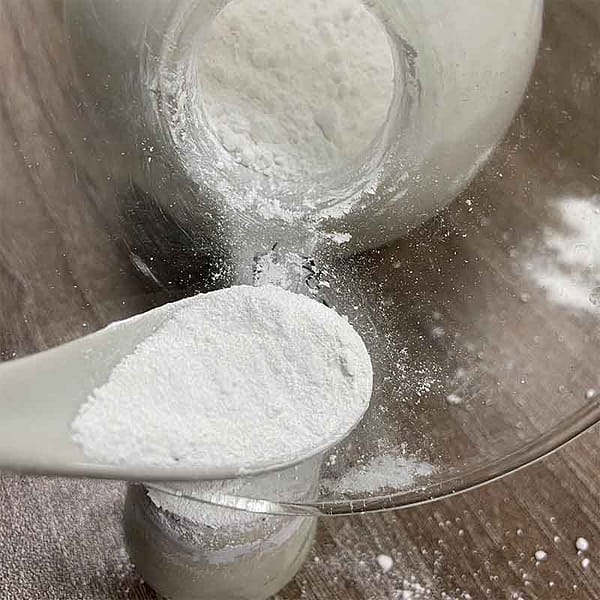In the vast array of industry, titanium dioxide, known as TiO2, titanium white or Pigment White 6 (PW6), emerges as a shining star, particularly when it comes to papers, plastics, paints, and rubber. This versatile compound, revered for its brilliant white color is a key element in transforming raw materials into vibrant, finished products. Discover the many applications of titanium dioxide as well as its production procedures. Discover the impact it can have on various industries.
The Canvas of Titanium Dioxide – A Palette of Possibilities
Titanium dioxide is an important component in the manufacture of a multitude of products, which contributes to the aesthetic appeal and function of objects we see every day. As Pigment White 6, it is an essential component in the production of paints. It gives a brilliant and opaque white color that increases the radiance and coverage of industrial and artistic uses equally.

In the world of plastics, titanium dioxide not only imparts color, but acts as an UV stabilizer, providing protection from the damaging effects of ultraviolet radiation. Its dual functionality makes titanium dioxide a crucial component in many plastic products. They range from tough outdoor products to packaging materials.
The Manufacturing Alchemy: Titanium Dioxide Production Methods
The production of titanium dioxide is a specialized process, and two methods dominate methods: the sulfuric acids method and chlorination method. Each method has its unique intricacies and applications, contributing to the versatility of titanium dioxide across industries.
The Sulfuric Acid Method: This method involves the reaction titanium-bearing ores with sulfuric acid and sulfuric acid, resulting in the formation of a titanium sulfate-based solution. The solution is later hydrolyzed in order to produce hydrated Titanium dioxide. The final product, after calcination, is an extremely fine white powder ready to be used in different applications, notably in the paint and paper industries.
The Chlorination Technique is a different method with chlorine gas this method works by combining titanium-bearing mineral to produce titanium Tetrachloride. The titanium tetrachloride goes through a series of chemical changes to create pure titanium dioxide. This method is prominent in the production of titanium dioxide for the plastics and rubber industries.
The Art and Science of Titanium Dioxide Applications
Titanium dioxide is a major ingredient in paints across industries. Titanium dioxide is a sought-after choice among artists, homeowners and industrial customers alike because of its capacity to produce a stunning white color. The brightness it adds to the canvas is not only aesthetic, but also functional, helping to prolong the life of painted surfaces.
Shaping plastics using radiant energy in plastics titanium dioxide performs a dual purpose. Beyond its role as a pigment for white, it also functions as a UV stabilizer, providing important protection against the degrading effects of sunlight. Titanium dioxide is therefore an essential part of the process of making outdoor plastics because it is a guarantee that they will maintain their structural integrity as well as visual attractiveness over time.
In the paper business, titanium dioxide is a key ingredient in the clarity and whiteness of papers. The addition increases the luminosity of the paper, making printed materials more vivid and easy to read. The function of titanium dioxide in the paper-making process goes beyond aesthetics. It is vital in increasing the quality of printed material.
Rubber Resilience and UV Resistance: The rubber industry is benefited by the UV resistance provided by titanium dioxide. In products made of rubber, particularly those exposed to outdoor conditions, titanium dioxide acts as a shield to protect against the damaging effects of ultraviolet radiation, ensuring the longevity and performance of rubber-based items.
Beyond Pigment The Invisible Impact of Titanium Dioxide
Titanium dioxide is a very visible pigment. However, its impact goes beyond its color. Its capacity to improve the resilience, durability, and endurance of different substances in different industries creates the compound as an invisible important contributor to the efficiency and quality of final products.
In conclusion it is clear that titanium dioxide is a substance of profound significance that seamlessly integrates into many industries. It is also known as Pigment White 6, it shines on canvasses that are both industrial and artistic. Two processes, sulfuric and chlorination demonstrate the alchemy behind its production. The possibilities include enhancing the visual appeal of paints, fortifying plastics from UV rays making paper more bright, or protecting rubber, titanium dioxide is regarded as a proof of the harmonious blend of art and science in the world of manufacturing. Its brilliance illuminates our everyday lives and shapes a range of items that are enduring in their shine.
